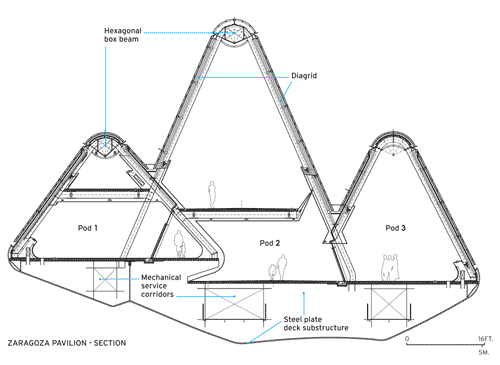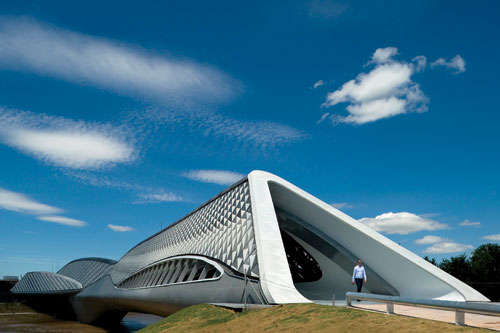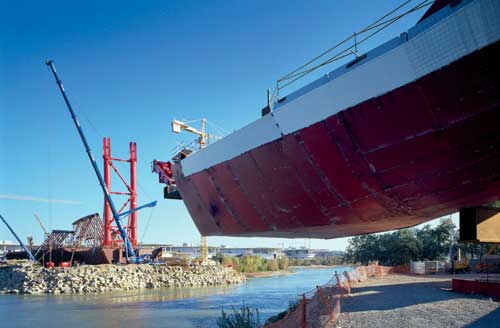Not-So-Pedestrian Footbridges
The pavilion's hybrid nature added a level of difficulty to the geometrically complex project. For example, it needed to be designed to deflect less under gravity and lateral loads than a typical bridge would. And it included other elements atypical for bridges, such as fireproofing, interior finishes, and mechanical systems. Finding the best places to locate service corridors within the structure for lighting, air-conditioning, and other systems was especially challenging, says Acosta. "These openings reduce the stiffness of the structure and most times require reinforcement around them, adding to the construction complications."
Contractors started foundation work in early 2006, extending piles more than 230 feet deep, because of the poor bearing capacity of the karstic ground below the pavilion. The steel superstructure components, begun about a year later, were fabricated in Spain's Basque region, in sections as large as road transportation limits would allow. Even so, on-site assembly and erection was labor intensive. "The asymmetric structure was a challenge to put in place," says Gatto.
 |
The pavilion consists of three triangular tube trusses (diagram, above), or (pods), that merge into one (below). A 2,200-ton section of the bridge was assembled on land and launched into place over the river with cables (bottom). Photos © Fernando Guerra (below); Roland Halbe (bottom) |
 |
 |
Â
For the shorter span, contractors temporarily filled in the river between the island and the north bank, erecting the components on falsework. The second span, which weighed more than 2,200 tons, was completely assembled on the south bank and painstakingly "launched" into position on cables over about two months in late 2007. After structural completion the following January, contractors raced to complete installation of cladding, mechanical systems, and finishes just in time for the June 2008 expo opening.









